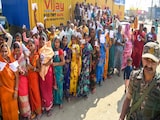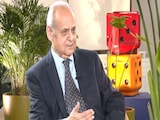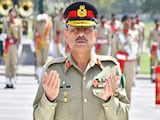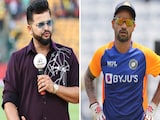When we think of cervical cancer, we often associate it with women. But the virus behind it, Human Papillomavirus (HPV), doesn't discriminate. It's one of the most common sexually transmitted infections globally, and while women are more likely to be screened and vaccinated, men often remain overlooked in the HPV conversation.
According to the World Health Organization (WHO), nearly every sexually active person will be exposed to HPV at some point in their lives. While most infections clear up on their own, some high-risk strains can lead to various cancers, not just cervical, but also penile, anal, and oropharyngeal (throat) cancers in men.
In India, where cervical cancer is the second most common cancer among women, public health experts are calling for an equally strong push for HPV vaccination among boys. "The misconception that HPV vaccination is only for women needs to change," says Dr Archit Pandit, Director of Surgical Oncology, Fortis Escorts Heart Institute, Okhla, New Delhi. "HPV prevention should be seen as a universal cancer-prevention tool."
HPV: Not just a woman's concern
"When people think of the HPV (Human Papillomavirus) vaccine, it's often linked only to cervical cancer in women. But HPV is not gender-specific, and neither should its prevention be," explains Dr Pandit. "The same virus can cause cancers of the penis, anus, and throat in men, apart from genital warts."
Men, he adds, are frequently asymptomatic carriers of HPV, meaning they can unknowingly transmit the infection to their partners. This silent transmission fuels the virus's spread within communities.
A 2023 WHO update on HPV epidemiology noted that high-risk strains such as HPV-16 and HPV-18 are responsible for over 70% of cervical cancers, but these same strains also cause nearly 90% of HPV-related anal cancers and 60% of oropharyngeal cancers in men.
Why HPV vaccination for boys is crucial
"By vaccinating boys and young men, we not only protect them from HPV-related cancers but also reduce the overall transmission of the virus in the community," says Dr Pandit.
Global research supports this approach. The Centers for Disease Control and Prevention (CDC) and WHO recommend routine HPV vaccination for both boys and girls aged 9 to 14 years. Countries such as Australia, the UK, and Canada, which adopted gender-neutral HPV vaccination programs, have seen a significant decline in HPV prevalence among both men and women.
Australia, for instance, is on track to become the first country to eliminate cervical cancer as a public health problem by 2035, largely because of its early, gender-inclusive vaccination policies.
What types of HPV vaccines are available?
"There are two main types of HPV vaccines currently available, the quadrivalent vaccine (protecting against HPV types 6, 11, 16, and 18) and the nonavalent vaccine (covering nine high-risk strains, including 16, 18, 31, 33, 45, 52, and 58)," explains Dr Pandit.
For children aged 9-14 years, two doses are recommended six months apart. Those aged 15-26 years should receive a three-dose schedule at 0, 1-2, and 6 months. "Both vaccines are safe, well-tolerated, and highly effective in preventing HPV-related cancers," he adds.
In India, the Cervavac vaccine, developed by the Serum Institute of India, has made HPV prevention more accessible and affordable. While initially introduced for girls, experts say expanding this program to include boys could be a game-changer for public health.
Signs of HPV-related cancers in men
HPV-related cancers can develop years after infection, making early signs hard to spot. According to the Indian Council of Medical Research (ICMR) and cancer specialists, some warning signs in men include:
- Persistent sores or growths on the genitals or anus
- Lumps, pain, or bleeding in the anal or penile region
- Difficulty swallowing or persistent sore throat (in oropharyngeal cancers)
- Swollen lymph nodes or unexplained fatigue
Since HPV infections are often symptomless, vaccination remains the most effective preventive tool, along with practicing safe sex and regular health check-ups.
The awareness gap in India
Despite scientific consensus, HPV vaccination among Indian males remains extremely low. "In India, awareness about HPV vaccination for males remains low," stresses Dr Pandit. "The misconception that it's a 'female-only vaccine' must change."
A 2022 survey by the Indian Journal of Community Medicine found that only 18% of parents knew that boys could receive the HPV vaccine. Urban India's awareness is rising, thanks to social media and health campaigns, but rural and semi-urban regions lag far behind.
Experts say school-based vaccination drives, similar to those conducted for other childhood vaccines, could help bridge this gap. "For parents, my message is simple, the HPV vaccine is as important as any other childhood immunization," says Dr Pandit.
HPV doesn't recognize gender, and neither should prevention. By vaccinating both boys and girls, India can significantly reduce the burden of HPV-related cancers. Public health experts agree that the key lies in gender-neutral vaccination, awareness, and early prevention.
As Dr Pandit concludes, "Eliminating HPV-related cancers is achievable, but only if both men and women are equally protected."
The HPV vaccine, much like the polio or hepatitis vaccine, is not just about individual protection. It's a powerful tool for community health. The sooner India embraces this, the closer we'll be to eradicating all related cancers.
Disclaimer: This content including advice provides generic information only. It is in no way a substitute for a qualified medical opinion. Always consult a specialist or your own doctor for more information. NDTV does not claim responsibility for this information.














